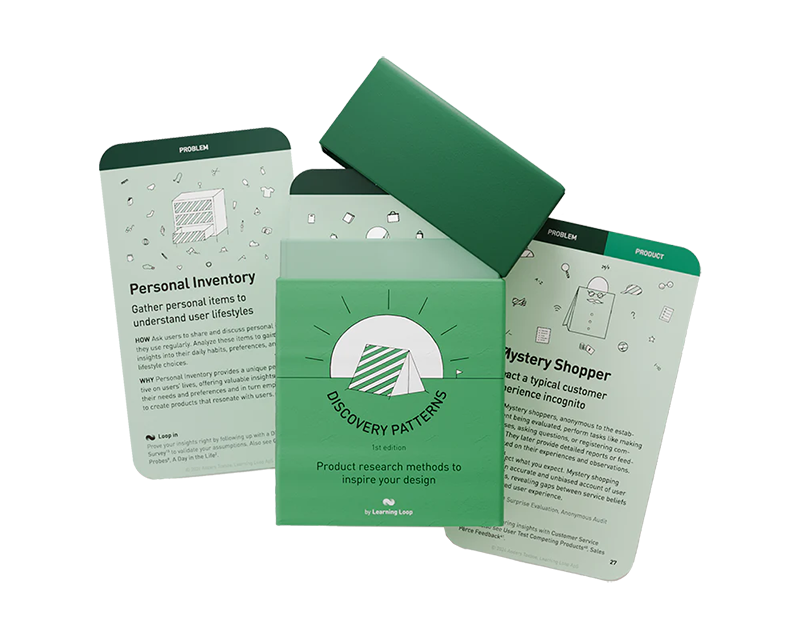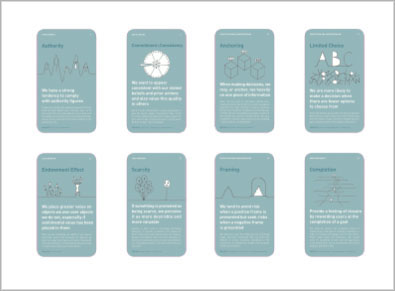Idea Validation: Problem, Market demand
Social Media Listening
Monitor social media for trends and opinions

How: Use social media monitoring tools to track relevant keywords, brands, and competitors. Analyze data to identify trends and feedback that can enhance product development, marketing, and customer service.
Why: Social media listening offers unfiltered access to customer opinions, providing real-time insights on industry, product, or service perceptions. This enables quick responses to trends, issues, and opportunities.
Social media listening can be used as a great research method allowing product teams to observe customers in the wild, without the filter of structured surveys or moderated interviews. It gives access to real-time, unprompted feedback about how people experience problems, evaluate products, and express unmet needs. In lean product discovery, it functions as an always-on pulse check that complements deeper, more focused methods like customer interviews or usability tests.
Step outside the bubble of the users you already know and formalized feedback loops
Rather than asking customers to recall or reflect, social media listening captures the moments when people are most emotionally engaged: praising a feature, venting about a frustration, or asking for help. These moments often provide more authentic signals than formal feedback channels, and they offer early clues about trends before they crystallize into customer demands.
What makes Social Listening a valueable source of insights
People reveal what they care about when they think no one is watching. On platforms like Twitter, Reddit, TikTok, and forums, users describe workarounds, compare tools, and share feedback in their own words. These spontaneous expressions often contain deeper insight into jobs-to-be-done, emotional triggers, or usage context than what you might get in an interview.
When structured effectively, social listening allows product teams to:
- Spot emerging themes in user pain points or expectations.
- Understand how the market reacts to competitors or industry changes.
- Validate whether a new feature or campaign is resonating.
- Monitor sentiment across segments or geographies.
It’s especially powerful at the early stages of discovery, where the goal is to identify possible opportunities or refine assumptions—not confirm hypotheses.
How to structure Social Listening study as a discovery activity
To use social media listening intentionally, begin by framing your objective. Are you trying to understand how people talk about a specific problem? Validate the desirability of a new category? Track adoption of a feature? The more specific your lens, the easier it becomes to sort signal from noise.
Next, set up your data collection. This can be done manually for small studies—searching hashtags or monitoring a subreddit—or with dedicated tools like Brandwatch, Sprout Social, Meltwater, or YouScan. These platforms allow you to build listening queries based on keywords, sentiment, audience segments, and even competitor mentions.
Data should be gathered over a relevant time window—enough to show patterns but not so long that it becomes outdated. Once collected, organize your findings into themes. Look at:
- What types of language users use to describe their problems.
- Which features get mentioned most—positively or negatively.
- Where confusion, disappointment, or delight show up in user comments.
- Who is talking—do they resemble your target customer or not?
Tech and SaaS companies use social media listening to identify where competitors are failing—or where a new trend is forming. A spike in mentions of “AI integration” or “workflow bottlenecks” can signal what users are struggling with today, and what they’ll expect tomorrow.
Getting it right
Social media listening provides real-time, unfiltered signals—but not all mentions are useful. You’ll need to filter out sarcasm, irrelevant posts, and non-customer chatter. High-quality insights tend to come from:
- First-person statements about real usage.
- Frustrated posts about specific limitations.
- Requests or recommendations shared in communities.
- Comment threads with back-and-forth clarification.
Feature requests or product mentions in social media are weaker signals than actions taken inside your product, but stronger than hypothetical feedback. When someone takes the time to publicly describe a workaround or obstacle, it suggests emotional salience.
The strength of evidence increases when you:
- Cross-reference insights with interview transcripts or survey results.
- Notice recurring patterns across different segments or platforms.
- Identify unexpected use cases that show up independently.
Pairing Social Listening with other experiments
As a lean discovery method, social listening pairs well with:
- Customer Interviews: Use social media findings to craft more informed interview guides.
- Validation Surveys: Test whether the pain points observed in conversations resonate across a broader sample.
- Feature Concept Tests: Explore whether specific frustrations align with interest in a new feature.
- Competitor Analysis: Track how users react to competitors’ releases or support breakdowns.
Social listening can also serve as a jumping-off point for hypothesis generation. If you notice a spike in confusion around a new pricing model, you might test alternative messaging. If people consistently complain about switching costs, you might explore onboarding redesigns.
Step outside your own bubble
Social media listening helps product teams step outside the bubble of known users and formalized feedback loops. It provides a raw, diverse stream of perspectives that, when treated thoughtfully, can lead to more informed product hypotheses and a richer sense of user reality.
It’s not a standalone solution. You’ll still need interviews, experiments, and analytics. But as an ambient signal, it can surface opportunities you weren’t even looking for. In that sense, it acts as both an input and a litmus test—what are people really talking about when they don’t know you’re listening?
In a lean discovery stack, that’s a source of insight worth paying attention to.
Popular tools
The tools below will help you with the Social Media Listening play.
-
Brandwatch
Brandwatch offers advanced social media listening with AI-driven analytics to uncover trends, sentiment, and consumer insights across platforms. Ideal for detecting unmet needs and evaluating feature sentiment.
-
Sprout Social
Sprout Social provides monitoring and reporting capabilities that help teams track brand mentions, analyze sentiment, and identify feedback that can inform product decisions.
Real life Social Media Listening examples
IKEA
In 2014, IKEA opened a Listening Hub with Brandwatch to prioritize “listening and learning.” This social media monitoring enables IKEA to spot trends and understand public interests, shaping product development with real-time insights.
Ben & Jerry's
Ben & Jerry’s found through social media that ice cream demand spikes even in poor weather, challenging their warm-month marketing strategy. They adapted by launching “Netflix & Chill’d,” a flavor for rainy days, reshaping their ad approach.
Spotify
In 2023, Spotify launched its AI DJ feature, a personalized AI guide that curates music based on individual user data and listening behavior. This innovation stemmed from insights gathered through social media listening, where users expressed a desire for more tailored and engaging music experiences.
Source: newsroom.spotify.com
Fitbit
Fitbit leveraged social media listening to understand user preferences and challenges. By monitoring conversations, they identified the need for more community engagement and personalized experiences, leading to features that foster a loyal user base and enhance product development.
Source: radarr.com
Burger King
Burger King utilized social media listening to gauge public interest in plant-based options. Feedback from online conversations informed the development and launch of the Vegan Whopper, aligning the product with consumer demand and dietary trends.
Source: youscan.io
Mountain Dew
Mountain Dew’s DEWmocracy campaign invited consumers to participate in creating new soda flavors. By engaging with fans through social media platforms, they harnessed user input to guide product development, resulting in flavors that resonated with their audience.
Source: wired.com
SoFi
SoFi identified a lack of financial literacy among its target audience through social media listening. In response, they created educational content to address these gaps, enhancing their value proposition and aligning their offerings with customer needs.
Source: sofi.com
Netflix
Netflix discovered that users often fell asleep while streaming content, leading to missed episodes. Recognizing this through social media feedback, they developed features to enhance user experience, such as providing options to resume playback from the last watched point.
Source: genylabs.io
Coca-Cola
Coca-Cola employs social media listening to understand consumer preferences and sentiments. Insights gathered from online conversations inform product development and marketing strategies, ensuring their offerings align with customer expectations.
Source: digitaldefynd.com
A collection of clever product discovery methods that help you get to the bottom of customer needs and coining the right problem before building solutions. They are regularly used by product builders at companies like Google, Facebook, Dropbox, and Amazon.
Get your deck!Related plays
- Enterprise Social Media: 6 Essential Tools by Christina Newberry
- What is Social Listening & Why is it Important? by Dominique Jackson at Sprout Social
- The Definitive Guide to Social Listening by Kit Smith at Brandwatch
- Accelerate Success with Lean Startup at Vizologi
- Make Public Perception Data Work for You: Collecting and Analyzing Social Media Data at RTI International
- How to Use Social Media for Market Research at Socialinsider
- How to Use Social Media for Market Research at Sprout Social
- The Ultimate Guide to Social Listening at Brandwatch

